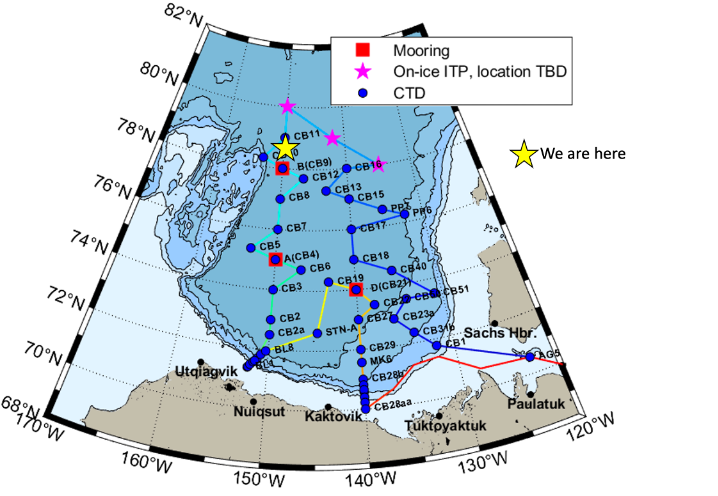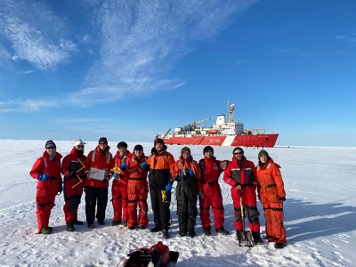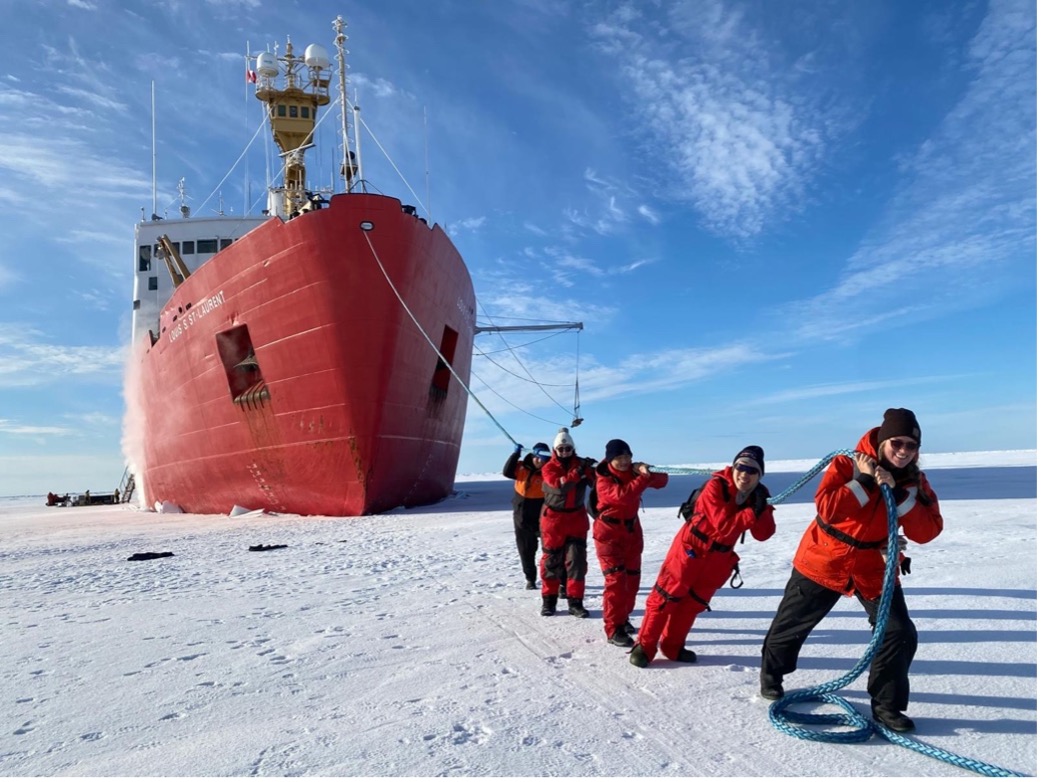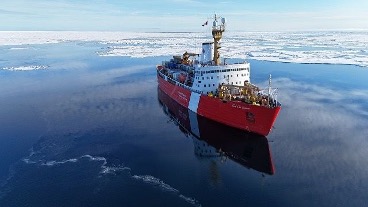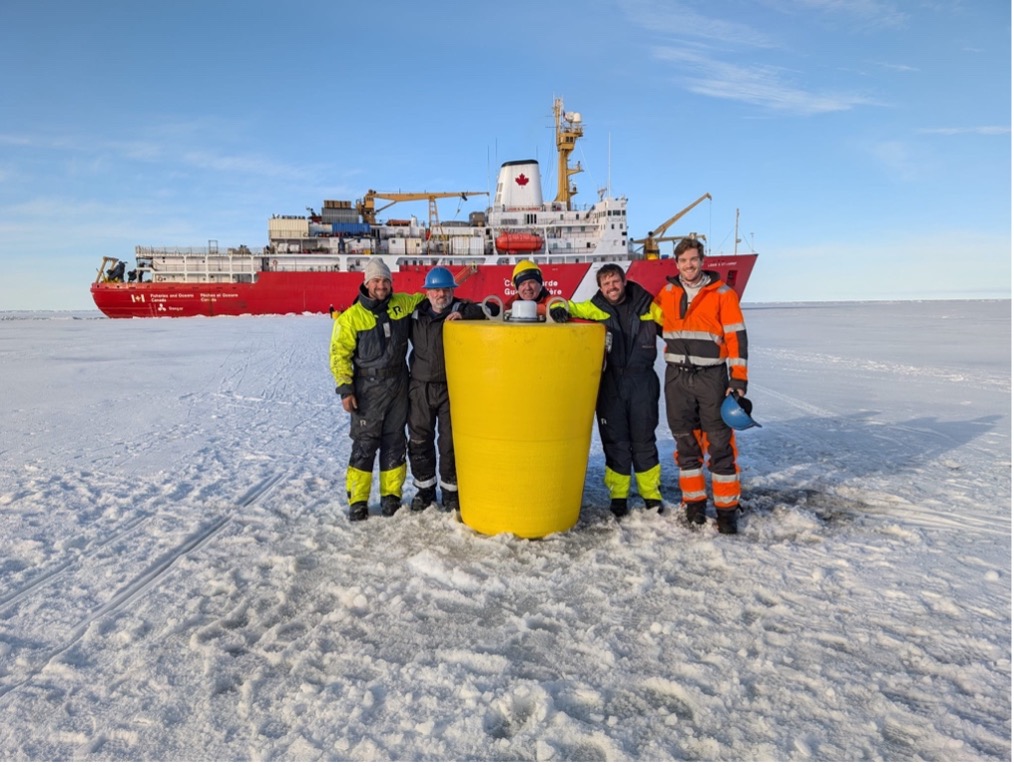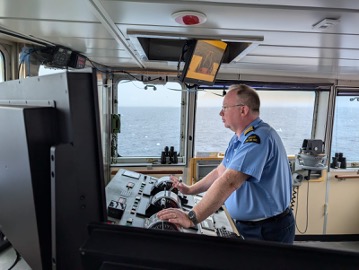Dispatch 10: Another ice day
Ashley Arroyo (Yale University)
September 8, 2024
16:30 UTC, 78.42°N 150.49°W
Conditions:
- Sunny
- 90% sea ice cover
- -5.6°C
- Winds 2.4 knots southeasterly
- Sunrise: 08-Sep-2024 07:47:26 -06
- Sunset: 09-Sep-2024 00:14:23 -06
- Day length: 16h 26mn 57s
Early this morning, we arrived at a floe that would be the setting of the second ice station of the expedition. The science team has been calling this ice station “The big one” because plans for this ice station day were much more extensive than yesterday’s, with respect to both the buoy deployments (led by Jeff O’Brien from Woods Hole Oceanographic Institution, WHOI) and the ice transect/coring work (led by Kazu Tateyama). Like yesterday, Mary-Louise Timmermans and Jeff O’Brien were lowered down onto the ice in the man-basket, where they surveyed the ice floe to ensure it was a good candidate for the deployment of buoys. Once they gave the green light and said the floe looked good, the deck crew began using the crane to transfer the equipment, including the buoys themselves, the ice augers, and other tools, onto the ice.
We were lucky to have beautiful, sunny weather (with light winds) out on the ice - it was a successful day for all. Five buoys were deployed near one another on the ice-based observatory- including a Tethered-Ocean Profiler (TOP12), an Ice-Tethered Profiler (ITP142), an Arctic Ocean Flux Buoy (AOFB), a Seasonal Ice Mass Balance (SIMB) buoy, and a MetOcean met-buoy. Together, these instruments should provide a cohesive dataset of many different ocean and atmospheric measurements throughout the year. TOP12 and ITP142 have already begun transmitting data, which can be accessed here. The ice coring and transect work led by Kazu and his team also went smoothly. They were able to take a 200-meter ice thickness transect, with 6 ice cores which were taken every 50 meters. The ice cores were chopped up into 10-cm segments and stored in plastic bags for further analysis in the future.
After all the ice work was complete, the CTD watch-standers completed a quick rosette cast down to 800 meters to collect water samples which will be used to calibrate some of the buoy sensors that were deployed earlier that day. After the rosette was back on board, the Louis began to steam north to CB-11.
